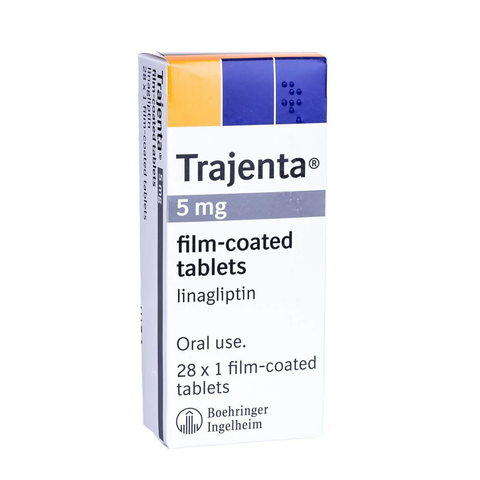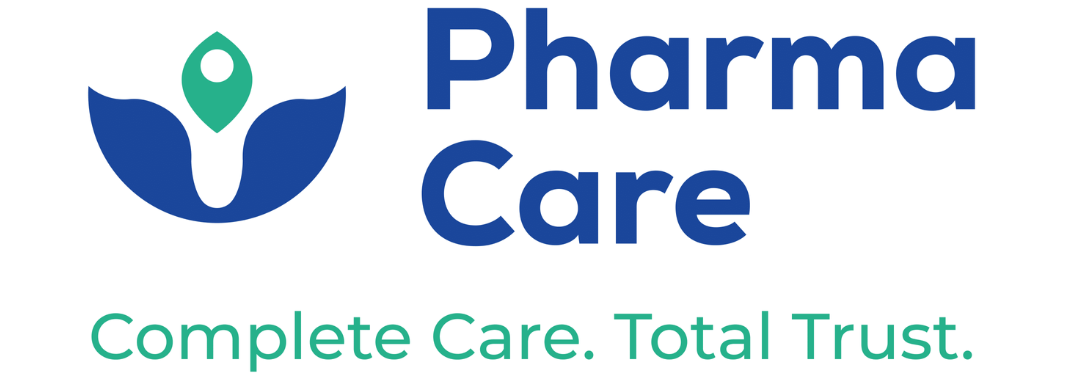
PharmaCare Online
Trajenta 5 Mg 30 Tablets
QAR 127.00
Title
QAR 127.00
Get notified when back in stock
No reviews
What Trajenta is used for
Trajenta is used to lower blood sugar levels in patients with type 2 diabetes mellitus.
It may be used when diet plus exercise do not provide adequate blood sugar level control either:
alone as a single medicine, or
in combination with certain other anti-diabetic medicines such as:
metformin, or
sulfonylurea medicines such as glimepiride and glibenclamide, or
insulin (with or without metformin), or
metformin plus sulfonylurea medicines, or
metformin plus sodium-glucose transporter 2 inhibitor medicines such as empagliflozin.
Type 2 diabetes mellitus is also called non-insulin-dependent diabetes mellitus or NIDDM. Type 2 diabetes develops if the body does not make enough insulin, or if the insulin that your body makes does not work as well as it should.
Insulin is a substance that helps to lower the level of sugar in your blood, especially after meals.
When the level of sugar builds up in your blood, this can cause damage to the body's cells and lead to serious problems with your heart, brain, eyes, circulation, nerves or kidneys.
How Trajenta works
Trajenta contains the active ingredient linagliptin, which is a member of a class of medicines you take by mouth called DPP-4 (dipeptidyl peptidase-4) inhibitors that lowers blood sugar levels in patients with type 2 diabetes mellitus.
Trajenta helps to improve the levels of insulin after a meal and lowers the amount of sugar made by your body.
Lowering and controlling blood sugar may help prevent or delay complications of diabetes, such as heart disease, kidney disease, blindness and foot amputation.
Along with diet and exercise, this medicine helps lower your blood sugar.
Your doctor will prescribe Trajenta alone, or in combination with another anti-diabetic medicine if that medicine alone is not sufficient to control your blood sugar level. It is important that you continue to follow the diet and/or exercises recommended for you while you are on treatment with Trajenta.
Ask your doctor if you have any questions about why this medicine has been prescribed for you.
Your doctor may have prescribed it for another reason.
This medicine is only available with a doctor's prescription. It is not addictive.
Before you take Trajenta
When you must not take it
Do not take Trajenta if you have an allergy to:
any medicine containing linagliptin (the active ingredient in Trajenta)
any of the other ingredients listed at the end of this leaflet.
Some of the symptoms of an allergic reaction may include:
shortness of breath
wheezing or difficulty breathing
swelling of the face, lips, tongue or other parts of the body
rash, itching or hives on the skin.
Do not give this medicine to a child or adolescent under the age of 18 years.
Safety and effectiveness in children younger than 18 years old have not been established. Trajenta has not been studied in children younger than 10 years of age.
Do not take this medicine after the expiry date printed on the pack or if the packaging is torn or shows signs of tampering.
If it has expired or is damaged, return it to your pharmacist for disposal.
If you are not sure whether you should start taking this medicine, talk to your doctor.
Before you start to take it
Tell your doctor if you have allergies to any other medicines, foods, preservatives or dyes.
Tell your doctor if you are pregnant or intend to become pregnant.
Your doctor will discuss the possible risks and benefits involved.
Tell your doctor if you are breast-feeding or planning to breast-feed.
Trajenta is usually not recommended while you are breast-feeding. It is not known if the active ingredient of Trajenta will pass into human breast milk and could affect your baby.
Tell your doctor if you have or have had any of the following medical conditions:
type 1 diabetes (also known as 'juvenile onset' or 'insulin-dependent' diabetes mellitus or 'IDDM'), a condition where your body does not produce any insulin
diabetic ketoacidosis, a condition where chemicals called ketones build up in the body or urine due to very low insulin levels, and results in high blood sugar, rapid weight loss, nausea or vomiting.
Trajenta is not a substitute for insulin. Trajenta should not be used to treat type 1 diabetes or diabetic ketoacidosis.
If you are not sure whether any of the above conditions apply to you, your doctor can advise you.
Alcohol, diet, exercise, and your general health all strongly affect the control of your diabetes.
Discuss these things with your doctor.
If you have not told your doctor, pharmacist or diabetes educator about any of the above, tell them before you take Trajenta.
Your doctor may want to take special precautions if you have any of the above conditions.
Taking other medicines
Tell your doctor or pharmacist if you are taking any other medicines, including any that you get without a prescription from your pharmacy, supermarket or health food shop.
Some medicines and Trajenta may interfere with each other. These include:
rifampicin (an antibiotic medicine used to treat certain infections such as tuberculosis)
carbamazepine, phenobarbital or phenytoin (medicines used to control fits (seizures) or chronic pain).
These medicines may be affected by Trajenta or may affect how well it works. You may need different amounts of your medicines, or you may need to take different medicines. Your doctor, pharmacist or diabetes educator can tell you what to do if you are taking any of these medicines. They also have more information on medicines to be careful with or avoid while taking this medicine.
How to take Trajenta
Follow all directions given to you by your doctor or pharmacist carefully.
They may differ from the information contained in this leaflet.
If you do not understand the instructions on the box, ask your doctor or pharmacist for help.
How much to take
The usual dose is one 5 mg tablet once daily.
Take Trajenta exactly as your doctor or pharmacist has told you.
Your doctor will prescribe Trajenta alone, or in combination with another anti-diabetic medicine, if that medicine alone is not sufficient to control your blood sugar level.
How to take it
Swallow the tablet with a full glass of water.
When to take it
Take your medicine at about the same time each day.
Taking it at the same time each day will have the best effect. It will also help you remember when to take it.
It does not matter if you take this medicine before or after food.
How long to take it
Continue taking Trajenta for as long as your doctor tells you to. Make sure you keep enough Trajenta to last over weekends and holidays.
Trajenta will help control your diabetes, but will not cure it. Therefore, you may have to take it for a long time.
If you forget to take it
If it is almost time for your next dose, skip the dose you missed and take your next dose when you are meant to.
Otherwise, take it as soon as you remember, and then go back to taking your medicine as you would normally.
Do not take a double dose to make up for the dose that you missed.
This may increase the chance of you getting an unwanted side effect.
If you are not sure what to do, ask your doctor or pharmacist.
If you have trouble remembering when to take your medicine, ask your pharmacist for some hints.
If you take too much (overdose)
Immediately telephone your doctor or Poisons Information Centre (in Australia telephone 13 11 26; in New Zealand telephone 0800 764 766) for advice, or go to Emergency at the nearest hospital, if you think that you or anyone else may have taken too much Trajenta. Do this even if there are no signs of discomfort or poisoning.






